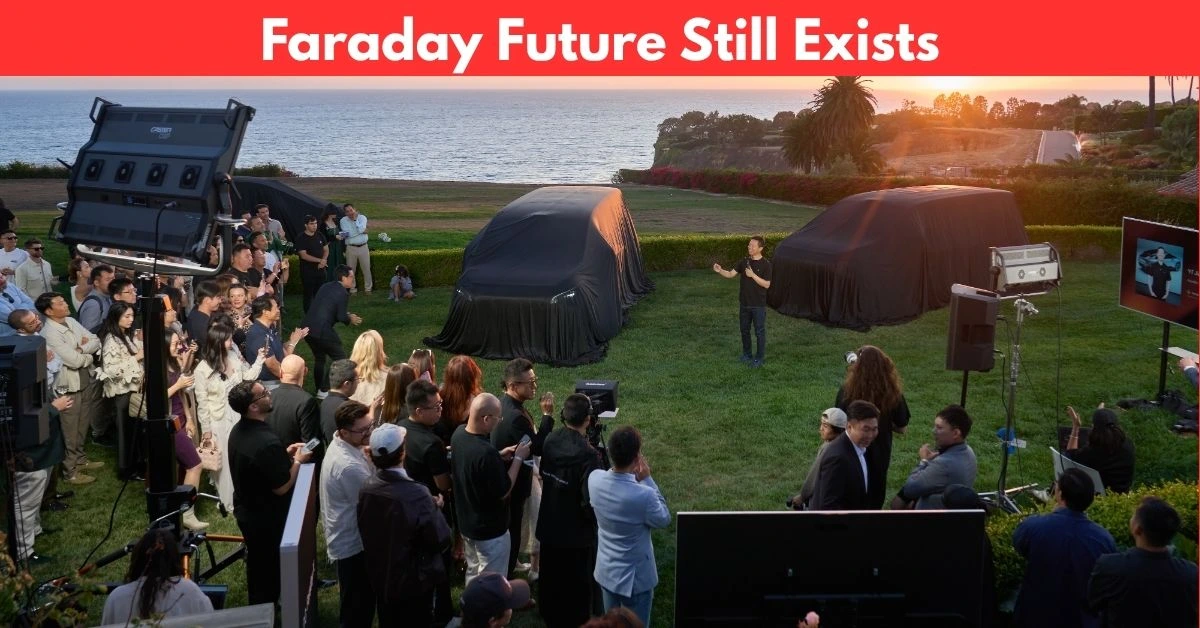Faraday Future touted its AI-driven MPV as game-changing—but offered nearly no specs and partnered with a Chinese van design. The reveal was widely mocked.
The electric vehicle landscape witnessed another spectacular stumble this month when Faraday Future unveiled its latest creation—the FX Super One. What should have been a triumphant comeback story instead became a masterclass in corporate theater gone wrong, complete with borrowed hardware, AI buzzwords, and a price tag left to customer imagination.
The Great Rebadge Reveal
Faraday Future’s much-hyped FX Super One turned out to be automotive smoke and mirrors at its finest. The “world’s first AI-powered luxury MPV” is essentially a Wey Gaoshan—a luxury van from Great Wall Motors’ sub-brand—dressed up with new badges and a low-resolution front display screen.
This isn’t innovation; it’s automotive karaoke. The company took an existing Chinese luxury van, slapped on some stickers, added a cheap screen, and called it revolutionary. Even the dashboard and center console remain identical to the original Gaoshan, making this one of the most transparent rebadging operations in recent automotive memory.
AI Everywhere, Substance Nowhere
The presentation drowned attendees in artificial intelligence buzzwords that would make even the most seasoned tech evangelist cringe. Terms like “Light 4, Swift 4, Focused 5, and Empowering 5 model of FF’s Global Automotive Industry Bridge Strategy” flew around the downtown Los Angeles rooftop venue like confetti—meaningless, colorful, and ultimately disposable.
The centerpiece “F.A.C.E.” (Front AI Communication Ecosystem) promises an AI assistant with “emotions and a soul,” but the reality is a low-resolution display that can’t even function while the vehicle is moving. It’s the automotive equivalent of claiming your calculator has consciousness because it displays numbers.
The Chaotic Theater
The hour-long presentation resembled a corporate comedy sketch more than a professional product launch. Multiple executives stumbled through teleprompter readings, microphone malfunctions plagued the event, and employees reportedly tried to prevent their own CEO from speaking. The extensive legal disclaimers warning that nothing shown represented the final product set the tone before a single word was spoken.
Faraday’s Troubled Legacy
This latest misstep adds another chapter to Faraday Future’s turbulent saga. Since 2017, the company has sold approximately 16 units of its flagship FF 91—mostly to investors and influencers rather than paying customers. Nevada’s treasurer previously labeled the company a “Ponzi scheme” after promised factory investments evaporated, leaving the state holding worthless subsidies.
The company’s stock ticker recently changed to FFAI in March 2025, perhaps hoping the “AI” suffix would generate renewed investor interest. With $105 million in fresh financing secured before the FX Super One launch, Faraday Future continues its pattern of raising capital on promises rather than deliverable products.
Market Potential Meets Execution Reality
| Aspect | Market Opportunity | Faraday Future’s Approach |
|---|---|---|
| Luxury Van Segment | Growing demand in Asia, Middle East, emerging in US | Rebadged existing vehicle with minimal differentiation |
| AI Integration | Genuine consumer interest in smart vehicle features | Vague buzzwords without functional demonstration |
| Premium Positioning | Mercedes-Benz and Lexus exploring luxury van space | Customer-determined pricing with no specifications |
| Production Capability | Claimed 30,000 annual capacity at Hanford facility | History of delivering under 20 units in 7 years |
| Market Timing | Perfect moment for luxury van innovation | Chaotic presentation undermines credibility |
The luxury van segment represents genuine market potential. These vehicles are already popular in Asia and the Middle East, with growing interest in Europe and emerging demand in America. However, execution matters more than market timing, and Faraday Future’s approach reads like a cautionary tale rather than a success story.
The Price is… Whatever You Want?
Perhaps the most surreal moment came when executives suggested customers would “help decide how much it would cost” through an “MSRP co-creation campaign.” This isn’t customer engagement—it’s corporate indecision masked as innovation. Promising the vehicle would cost less than a Cadillac Escalade while providing no actual specifications creates more questions than answers.
Despite the presentation’s disasters, Faraday Future claims 10,034 “binding deposits for non-binding pre-orders” were collected, including fleet sales and dealership arrangements. The $100 refundable deposit structure suggests even the company expects significant cancellations.
Why This Matters
The FX Super One debacle illuminates broader issues plaguing the electric vehicle startup ecosystem. Genuine innovation requires more than buzzwords and borrowed hardware—it demands engineering excellence, manufacturing capability, and honest communication with consumers.
While the luxury van market offers real opportunities for thoughtful players, Faraday Future’s approach serves as a reminder that fancy presentations cannot substitute for substantial products. The company’s continued existence despite years of unfulfilled promises raises questions about startup accountability and investor due diligence in the EV space.

